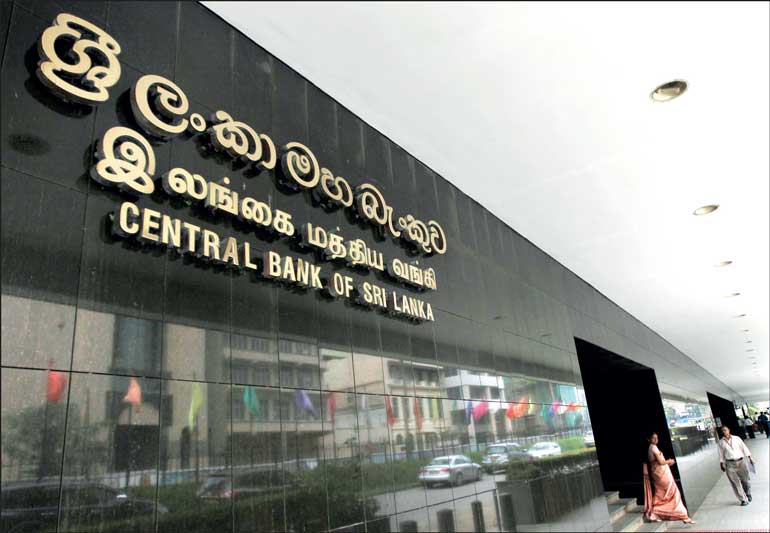Sunday Apr 20, 2025
Sunday Apr 20, 2025
Wednesday, 17 July 2024 00:26 - - {{hitsCtrl.values.hits}}

The revival program recently initiated by CBSL is a big opportunity for the banks to reduce their non-performing balance via rehabilitating the distressed customers while contributing to the national economy of Sri Lanka
|
 The non-performing ratio of the banking sector in Sri Lanka has been drastically increased due to the inconceivable and unprecedented circumstances incessantly faced by the Sri Lankan community from the Easter Sunday attack through the COVID-19 pandemic up to the economic recession. By mid-2023, the non-performing ratio of the banking sector in Sri Lanka was 13.3% which was a substantial percentage comparing with previous years. A well-planned, robust recovery mechanism is an impetus for every banking institution nowadays which boosts generating the profit and enhancing the asset quality while increasing the capital adequacy. Hence, the recovery of non-performing should be developed with creative tools and techniques with a holistic approach without being limited to one corner.
The non-performing ratio of the banking sector in Sri Lanka has been drastically increased due to the inconceivable and unprecedented circumstances incessantly faced by the Sri Lankan community from the Easter Sunday attack through the COVID-19 pandemic up to the economic recession. By mid-2023, the non-performing ratio of the banking sector in Sri Lanka was 13.3% which was a substantial percentage comparing with previous years. A well-planned, robust recovery mechanism is an impetus for every banking institution nowadays which boosts generating the profit and enhancing the asset quality while increasing the capital adequacy. Hence, the recovery of non-performing should be developed with creative tools and techniques with a holistic approach without being limited to one corner.
Recovery policy as a rehabilitation mechanism
Debt recovery is initiated from the event of the loan granting. The lending decisions should be taken by following the different types of guidelines/principles like CAMPARI (Character, Ability, Means, Purpose, Amount, Repayment and Insurance), 6Cs (Capital, Character, Capacity, Conditions, Collateral and Cash Flow) and PARTS (Purpose, Amount, Repayment, Terms and Security), etc. The common purpose of these sets of guidelines/principles is to carefully scrutinise the feasibility of the customer and his business with analysing the future potentialities. The security is only a secondary way out for the recovery of the debt; the main fact for the debt recovery should be the repayment capacity with potential cash flows.
However, a credit decision of a bank is inextricably associated with credit risk due to the micro and macro economic conditions which are beyond the control of the customer. Hence, the repayment capacity of the borrower can be affected by unpredictable circumstances; subsequently the liabilities of the bank will be transferred to non-performing category. These borrowers cannot be treated as wilful defaulters, and should be immediately remedied out by different tools and techniques like Restructuring, Rescheduling and Revival with Rehabilitation. Under these strategies, the borrower can be granted a moratorium/grace period and term extension with interest concessions for existing loans and fresh loans can be granted to fix working capital requirement.
The business can be revitalised via these fresh liabilities while enhancing the cash flow of the business by reducing the existing liabilities in non-performing category. The survival of the business is the crux to repay the liabilities availed by the business entity. Therefore, the revival of the business of the borrower is a paramount important fact to reduce the non-performing liabilities of the banking sector as well as to reach up to sustainable economic condition within the country. The Recovery Process for non-performing loans of each bank should be articulated as a Rehabilitation Mechanism.
Circular No. 02 of 2024 of CBSL for the Establishment of Business Revival Units in Licensed Banks
This is the great attempt of the CBSL to direct the licensed banks to rehabilitate the distressed customers with the purpose to develop the national economy of the country via facilitating the businesses which have been severely affected by uncontrollable macroeconomic conditions and improving the asset quality of the licensed banks.
Under these Circular Guidelines, the bank should first identify the fundamental viable customers based on the financial ratios during a period of last consecutive three years in order to be qualified for a revival program. After analysing the profitability, operating income, leverage, financial cost, liquidity and cash flows, there should be a positive trend for a fundamental viable customer to be undergone to a revival mechanism.
It is obvious, financially distressed, especially a defaulted, non- performing customer cannot prove a positive status from this type of financial analysis. There should be a leeway for a borrower who has non - performing liabilities within the bank as he is distressed and re-distressed on unprecedented incidents which are beyond his control. Accordingly, only for the non – performing customers, the financial analysis should be a robust process for a substantial period which is adequate to understand the financial behaviour of the business during the pre crisis and post crisis period in the country. Throughout the analysis of the financial status of the distressed borrowing company, the bank would be able to understand the behaviour of the business cycle in both good and bad times and its’ feasibility to reinstate the business up to a sustainable position by studying the current business plan and future projected cash flows. This financial analysis should be compared with the industry averages in each year in order to justify the position of the business of the borrower.
The financial analysis of non-performing customer should be specific and distinguished. In order to reach out a win- win position for both parties, the bank should not be relied on the current ratios of the company on profitability; operating income and leverage, etc. however, it should be thoroughly considered and analysed the viability of the business plan and the future projected cash flows which are to be enhanced through fresh financing from the bank for the fulfilment of working capital requirement. The banks should be analysed the contribution to the national economy from the particular business prior to initiate the revival program.
Under this Circular, the restructuring is consisted both financial restructuring inclusive of debt forgiveness, adjustment of rate of interest, term extensions and provisions of new financing and operational restructuring inclusive of strategies and techniques to enhance the operational profitability and the efficiency of the business such as cost reduction methods, and implementation of a new cash management system, etc.
Accordingly, the rehabilitation of a distressed customer throughout a revival program is not an easy process which should be done very carefully from the beginning up to the end. As per the Circular, the business revival units have been established in every licensed bank to do this task from 01.07.2024. There should be a clearly defined specified, but an objective method to treat the non-performing customer who are not considered as wilful defaulters which is not solely based on the ratios/numbers of the business. The viability of the business of non- performing customer should be decided on the feasibility of the business plan and potentiality of the projected cash flows along with the analysis of the ability of the business as an economic catalyst. Otherwise, there is no any other option than initiating arduous, sluggish and time consuming litigation process in order to recover the non performing loans.
Recovery through litigation
The licensed banks have the right to Parate Execution in order to recover the non-performing loan facilities which have been granted against the property mortgage with the capital outstanding of Rs. 5.0 million or above. Parate Execution is a robust process which can be initiated for the realisation of the mortgaged assets by mere a Resolution of the Board of Directors of particular bank without any intermediation of the court. This procedure has been postponed up to 15.12.2024 via the Recovery of Loans by Banks (Special Provisions) (Amendment) Act No. 26 of 2024.
Secondly, the banks can file an action in the courts as per the Civil Procedure Code, Mortgage Act and Debt Recovery (Special Provisions) Act. Recently, Small Claims Court Procedure Act was introduced to file action for the recovery of the loan facilities with the capital outstanding not exceeding a sum of Rs. 2.0 million. There are several types of legal action under these various acts such as Money Recovery, Debt Recovery and Mortgage Bond Action under summary and non- summary procedures.
Finalising the litigation procedure via the court proceedings without having any settlement is not successful, ending with loose-loose position for both parties. Hence, litigation should be a strategy to enforce both parties to a compromising settlement plan for the non-performing loan facility/ties via fruitful and effective negotiations even after initiating the litigation process.
Hence, the litigation should not be a constraint to the eligibility of a revival program for non- performing customer. The litigation process can be legally settled throughout the court and then the revival program can be continued. The purpose of the litigation against the borrower is to somehow settle the liabilities. If the customer is willing to pay the loans by revitalising the business throughout a revival program, the bank should allow the customer to do so.
Repayment through relationship
The security realisation is only a secondary way out for the recovery of non-performing loans. The most important factor to enforce the customer towards an amicable settlement is to maintain the relationship with him even during the bad times as same as in good times. The litigation should be the last resort. Prior to that, there are various tools and techniques that should be implemented to reinstate the business of the customer while enhancing the repayment capacity. The efforts which are taken by the bank officers to rehabilitate the customer in good faith will be the most influential factor to enforce the customer to repay the non- performing liabilities. In order to achieve this win-win situation, negotiation is the main strategy in recovery process.
Accordingly, the recovery officer should have the prowess to understand the customer and to implement the best recovery tool or technique by analysing the situation in holistic manner. The revival program recently initiated by CBSL is a big opportunity for the banks to reduce their non-performing balance via rehabilitating the distressed customers while contributing to the national economy of Sri Lanka. However, there should be specific and well-defined, distinguished mechanism when it is applied for the non-performing customers.
(The writer is a banker and an Attorney at Law.)
Discover Kapruka, the leading online shopping platform in Sri Lanka, where you can conveniently send Gifts and Flowers to your loved ones for any event including Valentine ’s Day. Explore a wide range of popular Shopping Categories on Kapruka, including Toys, Groceries, Electronics, Birthday Cakes, Fruits, Chocolates, Flower Bouquets, Clothing, Watches, Lingerie, Gift Sets and Jewellery. Also if you’re interested in selling with Kapruka, Partner Central by Kapruka is the best solution to start with. Moreover, through Kapruka Global Shop, you can also enjoy the convenience of purchasing products from renowned platforms like Amazon and eBay and have them delivered to Sri Lanka.
Discover Kapruka, the leading online shopping platform in Sri Lanka, where you can conveniently send Gifts and Flowers to your loved ones for any event including Valentine ’s Day. Explore a wide range of popular Shopping Categories on Kapruka, including Toys, Groceries, Electronics, Birthday Cakes, Fruits, Chocolates, Flower Bouquets, Clothing, Watches, Lingerie, Gift Sets and Jewellery. Also if you’re interested in selling with Kapruka, Partner Central by Kapruka is the best solution to start with. Moreover, through Kapruka Global Shop, you can also enjoy the convenience of purchasing products from renowned platforms like Amazon and eBay and have them delivered to Sri Lanka.